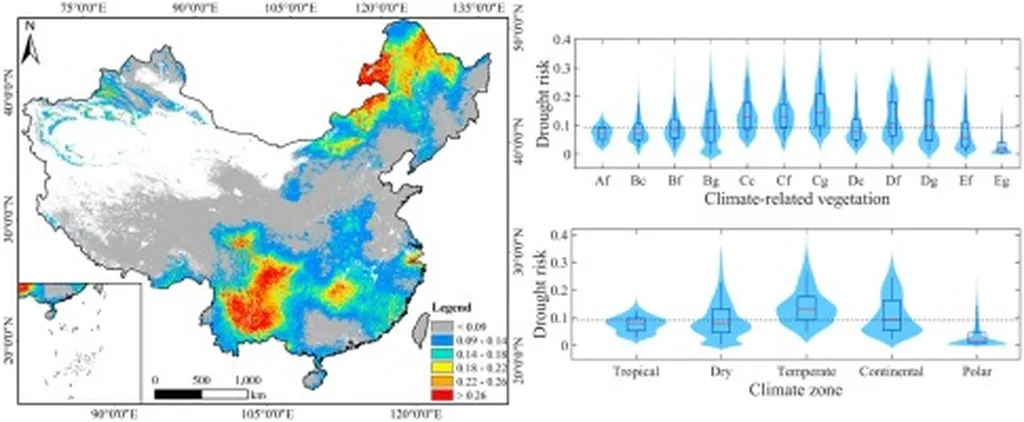In the arid expanses of Northwest China, a groundbreaking study led by Di Fu from the School of Geographical Science at Qinghai Normal University is revolutionizing how we monitor and understand compound drought-waterlogging stress in groundwater-sensitive agroecosystems. Published in the journal *Agricultural Water Management* (translated as “Agricultural Water Management”), this research offers a novel framework that could significantly impact agricultural resilience and, by extension, the energy sector’s reliance on stable food production systems.
The study focuses on the Gahai Irrigation District, an area increasingly vulnerable to the dual threats of drought and waterlogging, driven by fluctuating groundwater levels exacerbated by climate change. Fu and his team have developed a remote sensing-based approach to monitor these compound stresses with unprecedented precision. By integrating a high-resolution root-zone soil moisture (RZSM) dataset with 33 downscaling factors—ranging from vegetation indices to topography and hydrological variables—they created a daily RZSM product with a spatial resolution of 30 meters. This fine-scale data allowed them to identify and map areas under stress, revealing significant spatial heterogeneity.
“Our findings show that moderate stress dominated the central parts of the groundwater-sensitive agroecosystem, driven largely by waterlogging-induced soil degradation,” Fu explained. “Meanwhile, severe stress was observed along the boundaries, where drought and waterlogging alternated in dominance.” This spatial variability underscores the complex interplay between groundwater dynamics, precipitation, and temperature, with the latter paradoxically reducing drought areas by enhancing snowmelt recharge.
The study introduces two critical indices: the Soil Moisture Condition Index (SMCI-index) and the Double Stress Index (DSI). These tools enable the identification of drought events (SMCI-index < 0.4 for at least 10 days) and waterlogging events (SMCI-index > 0.6 for at least 3 days), as well as their synergistic impacts. The validation of these indices showed strong consistency with vegetation indices and a significant spatial overlap with modeled waterlogging zones, highlighting the robustness of the approach.
For the energy sector, the implications are profound. Agriculture is a cornerstone of food security, and stable agricultural production is crucial for maintaining energy demand and supply chains. By providing a detailed, fine-scale monitoring framework, this research offers a tool to enhance agricultural resilience in the face of hydrological extremes. “This study demonstrates that downscaled RZSM data can effectively mitigate precipitation interference and enable fine-scale monitoring of groundwater-driven compound drought-waterlogging stress,” Fu noted. “The findings offer critical insights for maintaining ecosystem services in groundwater-sensitive agroecosystems under hydrological extremes.”
As climate change continues to intensify, the ability to monitor and manage compound stress events will become increasingly vital. This research not only advances our scientific understanding but also paves the way for practical applications that can support sustainable agriculture and, by extension, the energy sector’s reliance on stable food production systems. The study’s innovative use of remote sensing and data integration sets a new standard for monitoring groundwater-sensitive agroecosystems, offering a blueprint for future developments in the field.

